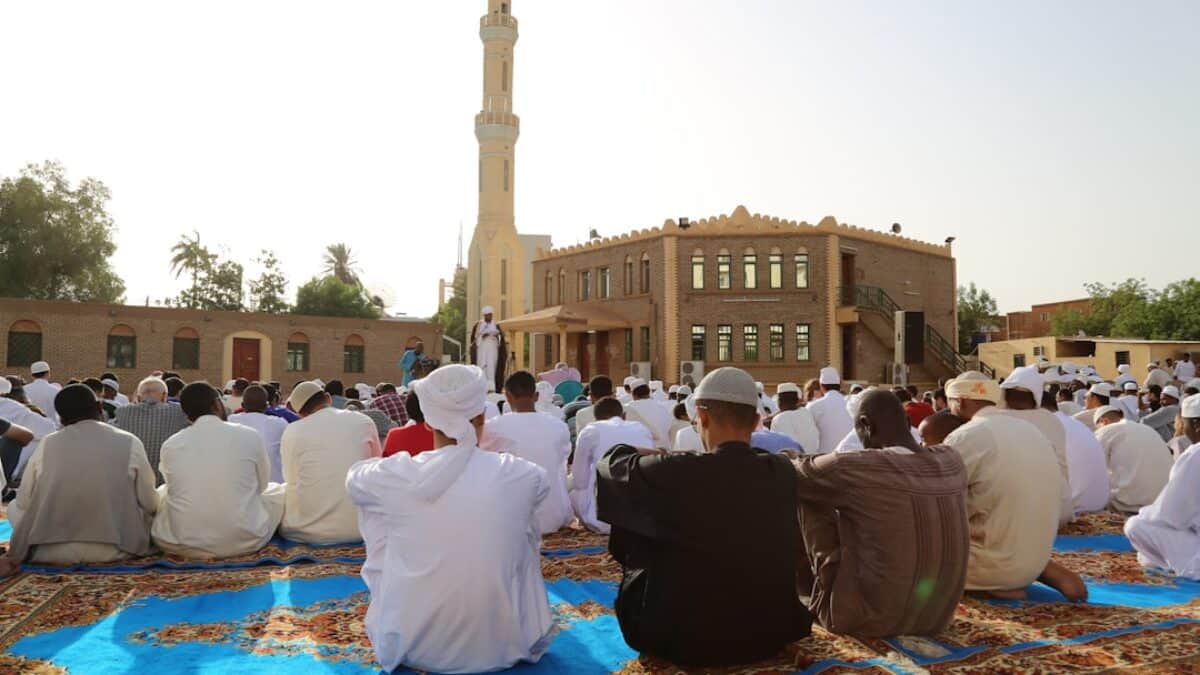Ramadan is a sacred month observed by millions of Muslims worldwide, marked by fasting from dawn to sunset. While the spiritual rewards are immense, the physical demands of abstaining from food and water for up to sixteen hours can challenge even the healthiest individuals. Proper planning and scientifically-backed strategies are essential to maintain energy, hydration, and fitness throughout this blessed period. This article offers evidence-based guidance that blends Islamic tradition with modern nutritional science, ensuring you honor your fast while keeping your body resilient and vibrant.
Understanding Ramadan Fasting and Its Physiological Impact
Fasting during Ramadan is more than refraining from eating and drinking; it is a holistic reset for body, mind, and soul. From a physiological standpoint, the human body transitions through distinct metabolic phases:
- Glycogen Depletion Phase (0–6 hours after suhoor): Stored glucose in the liver and muscles supplies immediate energy.
- Early Ketosis (6–12 hours): Glycogen stores decline, and the liver begins breaking down fat into ketones for fuel.
- Stable Ketosis (12+ hours): Ketones become the primary energy source, preserving muscle protein and stabilizing blood sugar.
Simultaneously, dehydration risk increases as fluid loss continues through respiration, perspiration, and minimal insensible losses. Understanding these shifts empowers you to tailor nutrition, hydration, and exercise to each phase.
Who May Need Modified Fasts or Medical Guidance?
- People with type 1 or poorly controlled type 2 diabetes
- Individuals on diuretics or blood-pressure medications
- Pregnant or breastfeeding women with complications
- Those recovering from acute illness or surgery
Always consult a qualified healthcare provider before Ramadan if you fall into any of these categories.
Key Components of Healthy Ramadan Fasting
1. Strategic Suhoor (Pre-Dawn Meal)
Suhoor is your metabolic anchor. A well-composed meal sustains energy for 12–16 hours and prevents muscle catabolism.
Macronutrient Blueprint
| Macronutrient | Recommended Choices | Portion Guidance |
|---|---|---|
| Complex Carbohydrates | Oats, quinoa, brown rice, whole-grain bread | 1–1½ cup cooked |
| Lean Protein | Eggs, Greek yogurt, cottage cheese, legumes | 20–30 g protein |
| Healthy Fats | Avocado, almond butter, chia seeds, olives | 1–2 tbsp or ¼ avocado |
| Fiber & Micronutrients | Spinach, berries, cucumbers, tomatoes | 2 cups vegetables + 1 cup fruit |
Practical example: Overnight oats with rolled oats, chia seeds, almond milk, grated apple, cinnamon, and a scoop of whey or plant protein provides slow-release carbs, omega-3 fats, and 25 g protein.
2. Hydration Mastery
Dehydration headaches, dizziness, and fatigue are common complaints. The goal is to replenish 2.5–3.5 L of fluid between iftar and suhoor.
- Stagger fluid intake: 500 mL at iftar, 500 mL after Taraweeh, 1 L before sleep, and 1 L at suhoor.
- Electrolyte balance: Add a pinch of pink Himalayan salt or an oral rehydration tablet to one bottle to replace sodium, potassium, and magnesium lost during the day.
- Avoid diuretics: Limit coffee and black tea to one serving at suhoor and none after 10 p.m. to prevent overnight fluid loss.
- Hydrating foods: Watermelon, cucumber, strawberries, and citrus fruits contribute up to 20 % of your daily fluid needs.
3. Balanced Iftar (Breaking the Fast)
The traditional three-date custom is both prophetic and physiologic: dates provide 15 g of natural glucose that rapidly normalizes blood sugar.
- Phase 1 (Immediate): 3 dates + 500 mL water or coconut water.
- Phase 2 (Light starter): Vegetable or lentil soup with whole-grain crackers.
- Phase 3 (Main meal): Grilled salmon or chicken, quinoa tabbouleh, and roasted vegetables.
- Phase 4 (Dessert swap): Greek yogurt parfait with berries instead of syrup-soaked pastries.
4. Portion Control & Mindful Eating
Post-fast feasting can lead to bloating, reflux, and weight gain. Use the “Plate Method”:
- ½ plate: non-starchy vegetables
- ¼ plate: lean protein
- ¼ plate: complex carbohydrates
Eat slowly, chewing each bite 20–30 times. It takes 20 minutes for satiety signals to reach the brain.
Benefits and Importance of Healthy Fasting Practices
When practiced correctly, Ramadan fasting offers a tapestry of benefits that extend beyond spiritual elevation:
- Metabolic Flexibility: Regular fasting trains mitochondria to switch efficiently between glucose and fat oxidation, improving insulin sensitivity and reducing the risk of type 2 diabetes.
- Cardiovascular Health: Studies show a 10–15 % reduction in LDL cholesterol and triglycerides after 30 days of Ramadan fasting in healthy adults.
- Cellular Autophagy: Fasting triggers the removal of damaged proteins and organelles, potentially lowering cancer risk and slowing aging.
- Mental Clarity: Ketone bodies, particularly beta-hydroxybutyrate, up-regulate brain-derived neurotrophic factor (BDNF), enhancing cognition and mood.
- Weight Management: A moderate caloric deficit of 300–500 kcal/day can lead to sustainable fat loss without muscle loss when protein intake is adequate.
Importance of community support: Sharing healthy meals with family and friends reinforces positive behavior change and fosters collective accountability.
Practical Applications: Daily Routines, Workouts, and Recipes
Sample Day-By-Day Schedule
| Time | Action | Key Tips |
|---|---|---|
| 04:00 a.m. | Suhoor | Finish eating 10 min before Fajr; include protein + complex carbs |
| 04:30 a.m. | Fajr Prayer & Light Stretching | 5 min dynamic stretches to boost circulation |
| 09:00 a.m.–12:00 p.m. | Work/School Block 1 | Schedule cognitively demanding tasks when cortisol is high |
| 12:30 p.m. | Power Nap (10–20 min) | Use eye mask and earplugs to improve sleep quality |
| 02:00 p.m.–04:00 p.m. | Work/School Block 2 | Stand up every 30 min to prevent blood-pooling |
| 05:00 p.m. | Light Prep (Iftar items) | Chop vegetables, marinate proteins |
| 06:00 p.m. | Pre-Iftar Hydration | Place 500 mL water bottle beside plate |
| 06:30 p.m. | Iftar | Break fast with dates + water, pray Maghrib, then starter |
| 07:30 p.m. | Taraweeh or 20-min Walk | Light aerobic activity aids digestion |
| 09:00 p.m. | Main Dinner (if needed) | Smaller balanced plate if still hungry |
| 10:30 p.m. | Resistance Training | Short 30-min session (see plan below) |
| 11:30 p.m. | Hydration Top-Up | 1 L water + pinch of salt |
| 12:00 a.m. | Light Snack & Sleep | Casein shake or cottage cheese for overnight muscle repair |
Exercise Prescription During Ramadan
Beginner 3-Day Split (20–30 min/session)
- Day 1 (Post-Taraweeh): Body-weight circuit—push-ups, squats, planks (3×12 reps each)
- Day 2 (Pre-Iftar): 15-min brisk walk on treadmill at 3–4 % incline
- Day 3 (Post-Isha): Resistance band rows, glute bridges, bird-dogs (3×15 reps)
Intermediate 4-Day Split (30–45 min/session)
- Heavy compound lifts (deadlifts, bench press) on non-fasting weekend days
- High-rep isolation moves (bicep curls, leg extensions) after iftar
- Core & mobility work every other day to prevent stiffness
Always prioritize form over load and monitor heart rate; target 50–60 % HRmax to avoid excessive fatigue.
Nutrient-Dense Recipes
Quinoa & Roasted Veggie Stuffed Bell Peppers
Ingredients: 4 bell peppers, 1 cup cooked quinoa, ½ cup chickpeas, 1 cup diced tomatoes, ¼ cup chopped parsley, 1 tsp olive oil, cumin, paprika, salt.
- Preheat oven to 200 °C.
- Hollow peppers, mix filling, stuff peppers, bake 25 min.
- Serve with 60 g grilled chicken or tofu.
Hydrating Green Smoothie (Suhoor)
- 1 cup spinach
- ½ cucumber
- ½ green apple
- 1 tbsp chia seeds
- 250 mL coconut water
- Squeeze of lime
Frequently Asked Questions
What is the ideal amount of water to drink between iftar and suhoor?
Most healthy adults need 35 mL per kilogram of body weight, totaling 2.5–3.5 L daily. Divide this into four equal portions and add 500 mL for every hour of intense exercise. Monitor urine color: aim for pale-straw hue. Clear urine may indicate over-hydration and electrolyte dilution.
Can I lose muscle mass while fasting?
Short-term fasting (16–18 hours) does not significantly catabolize muscle provided daily protein intake is ≥ 1.2 g/kg body weight and resistance training is maintained twice weekly. Consuming casein-rich foods at suhoor (yogurt, cottage cheese) delivers a steady amino-acid release, further protecting lean tissue.
Is it safe to exercise while dehydrated?
Moderate dehydration (≤ 2 % body weight) is generally safe for low-intensity activities such as walking or gentle yoga. High-intensity or prolonged workouts should be scheduled after iftar when re-hydration is possible. Signs of unsafe dehydration include dizziness, dark urine, or elevated resting heart rate.
How can I manage heartburn and indigestion after heavy iftar meals?
Eat slowly and stop at 80 % fullness. Avoid fried, spicy, and high-fat foods that delay gastric
























Post Comment